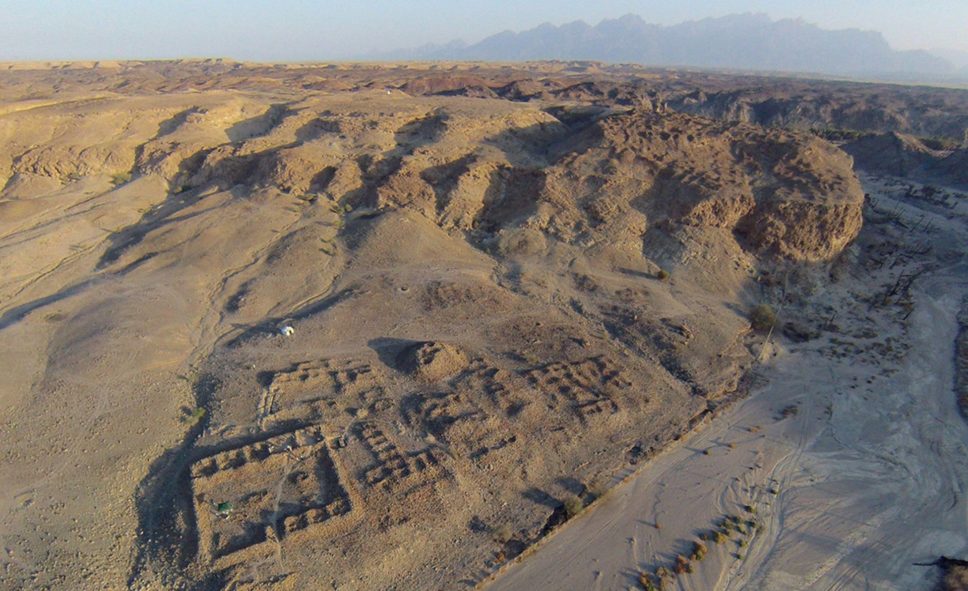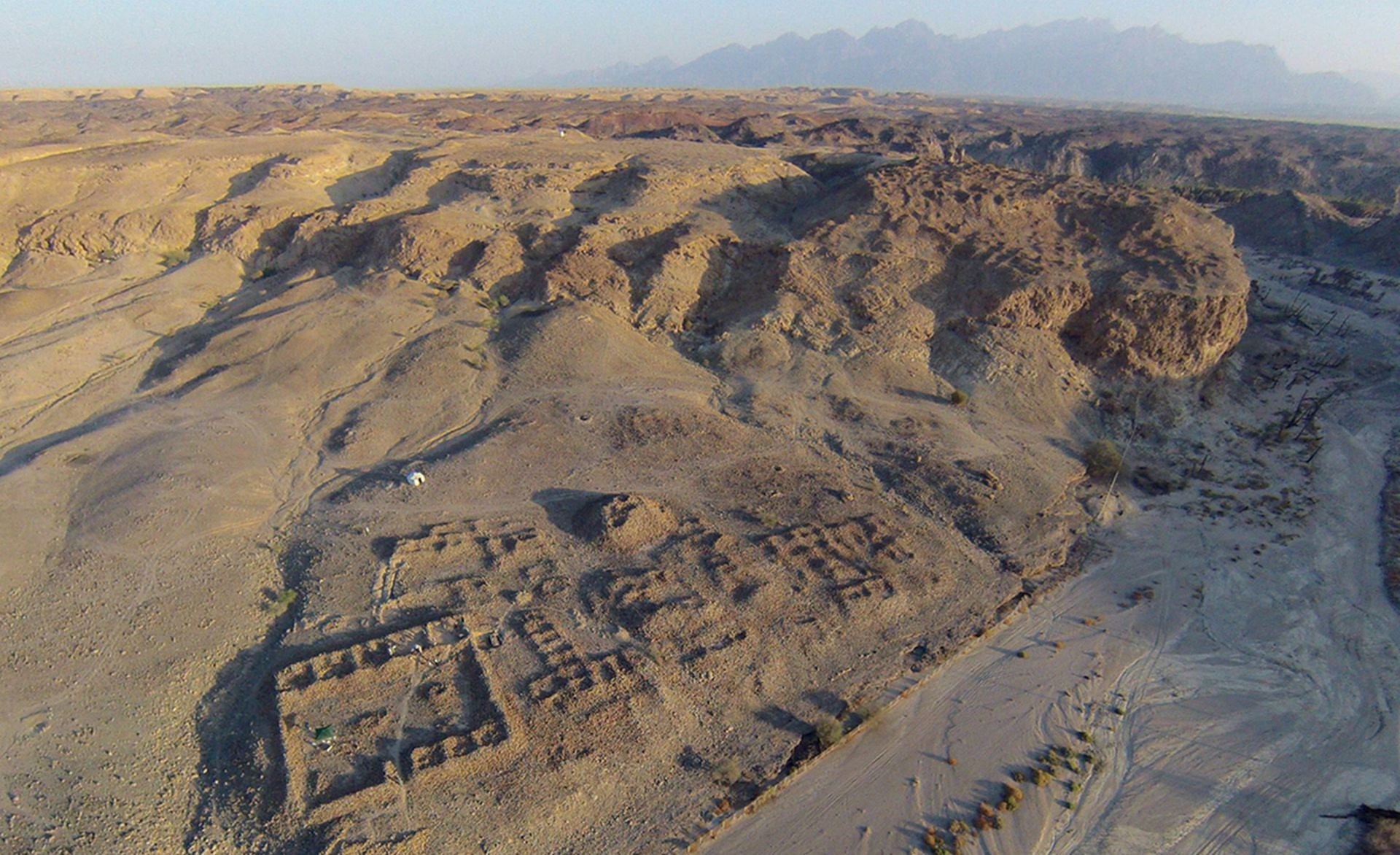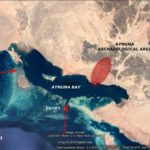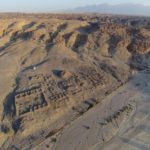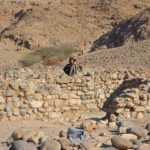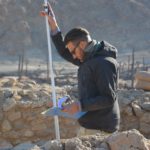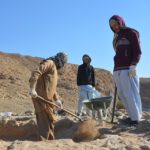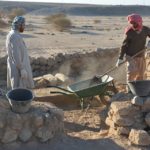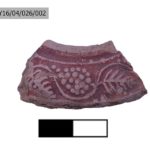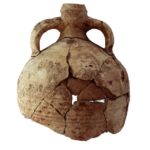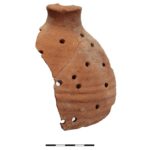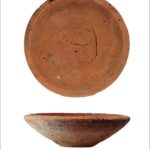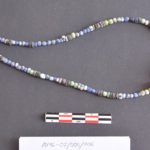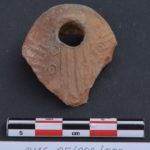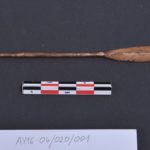Aynuna
Ancient Leuke Kome(?)
-
Project name:
Saudi–Polish Archaeological Project in Aynuna
-
Type of site:
Settlement: harbor, trading post and settlement
Location:
Saudi Arabia
Tabuk ProvinceDating:
– Roman-Nabataean period (2nd century BC–2nd century AD)
– late antique/early Islamic period (3rd–8th century AD)
Most interesting finds:
– a complex of buildings from the Roman, late Roman and early Islamic periods
– tombs and graves from different periods
– Thamudic inscription
– bronze objects
– glass ornaments
– locally-made and imported pottery vessels
– remnants of exotic spices
– stone objects of everyday use
History of research:
Investigated by the PCMA mission in:
2014–
Type of research:
excavations, survey
Directors:
Michał Gawlikowski (Polish Centre of Mediterranean Archaeology, University of Warsaw, 2014–2019)
Abdullah al-Zahrani (Saudi Commission for Tourism and National Heritage, 2014–2019)
Co-operating institutions:
– Polish Centre of Mediterranean Archaeology, University of Warsaw
– Saudi Commission for Tourism and National Heritage
Additional information:
The research was financed from a Harmonia 6 grant from the Polish National Science Centre, Infrastructure of the international trade in the Red Sea region in the Roman period ; Principal Investigator: M. Gawlikowski (UMO-2014/14/M/HS3/00795).
Description of the site and research:
The site of Aynuna lies on the bank of a dry river-bed of the same name (Wadi Aynuna /Fig. 1, 2/). It consists of several parts: a harbor, covered by the modern town of Khoraiba, a trading post lying 3 km away /Fig. 2, 3/ and a fortified settlement rising on the plateau cut by the Wadi Aynuna. Archaeological excavations focus on the trading post /Fig. 3, 4, 5, 6, 7/, while the remaining areas have been surveyed.
The building complex connected to the trading post and other edifices of yet unknown purpose date from the Roman period (1st century AD) through the early Islamic period (8th century AD). Both architectural remains and small objects represent an interesting example of a local culture functioning in the broad context of international trade /Figs 8, 9, 10, 11, 12, 13, 14/.
Season by season – “PCMA Newsletter”:
- Season 2018
- Season 2017
- Season 2016
- Season 2015
- Season 2014
M. Gawlikowski, K. Juchniewicz: Aynuna on the Red Sea, poster (PDF); Seminar for Arabian Studies 2016, London
Gawlikowski, M., Juchniewicz, K., Zahrani, A. (2018). The Saudi–Polish Excavations at Aynuna, a Nabatean Port on the Red Sea. ATLAL (w druku)
Gawlikowski, M. (2018). Looking for Leuke Kome. In Stories of Globalisation: The Red Sea and the Persian Gulf from Late Prehistory to Early Modernity. Leiden, The Netherlands: BRILL. doi: https://doi.org/10.1163/9789004362321_015
Gawlikowski, M. (2017). Indian Trade Between the Gulf and the Red Sea. Polish Archaeology in the Mediterranean 26/2, 15–30
Juchniewicz, K. (2017). The port of Aynuna in the pre-Islamic period: nautical and topographical considerations on the location of Leuke Kome. Polish Archaeology in the Mediterranean 26/2, 31–42
Gallery:
-
1. Area of archaeological work in Aynuna Bay / Zatoka Aynuna z zaznaczonym obszarem badań (M. Truszkowski, K. Juchniewicz)
-
2. Wadi Aynuna, view of the remains of a trading post / Wadi Aynuna, widok na pozostałości faktorii handlowej (fot. M. Truszkowski)
-
3. Aynuna, remains of a trading post / Aynuna. Pozostałości faktorii handlowej (fot. Archiwum CAŚ UW)
-
4. Aynuna, remains of a trading post / Aynuna. Pozostałości faktorii handlowej (fot. Archiwum CAŚ UW)
-
5. Aynuna, remains of a trading post / Aynuna. Pozostałości faktorii handlowej (fot. Archiwum CAŚ UW)
-
6. Aynuna, remains of a trading post / Aynuna. Pozostałości faktorii handlowej (fot. Archiwum CAŚ UW)
-
7. Aynuna, remains of a trading post / Aynuna. Pozostałości faktorii handlowej (fot. Archiwum CAŚ UW)
-
8. Fragment of a Roman lamp / Fragment rzymskiej lampki (fot. M. Truszkowski)
-
9. Fragment of a vessel / Fragment naczynia (fot. Z. Kowarska)
-
10. Fragment of a vessel / Fragment naczynia (fot. Z. Kowarska)
-
11. Small pottery bowl / Miseczka ceramiczna (fot. Z. Kowarska)
-
12. Necklace / Naszyjnik (fot. J. Kaniszewski)
-
13. Jerash lamp (fot. J. Kaniszewski)
-
14. Bronze spatula / Spatula, brąz (fot. J. Kaniszewski)

